From the Sperry Gardens: March 24, 2016
We live in a pecan forest. There are almost no spots of direct sun anywhere in our landscape. That means that the trees, shrubs, vines and groundcovers I grow are going to have to handle the shade and still grow without complaining.
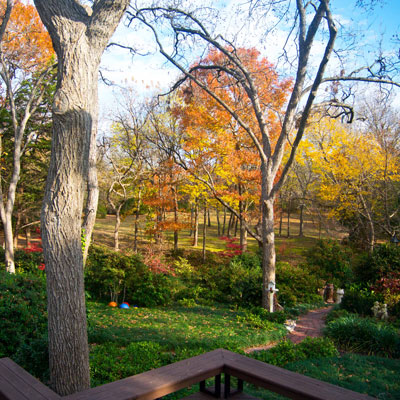
Two 5-year-old ‘Bloodgood’ Japanese maples are beginning to make their presence known just behind the front row of hollies in our backyard. Click to see a larger photo.
When I want some kind of exclamation point in a shady spot with high visibility, I think first of Japanese maples. They’re about as pretty as a small, shade-needing tree can be. And, my wife loves them. I’m a prudent man, so most of my nursery buying sprees end up with a new tree for my marriage.
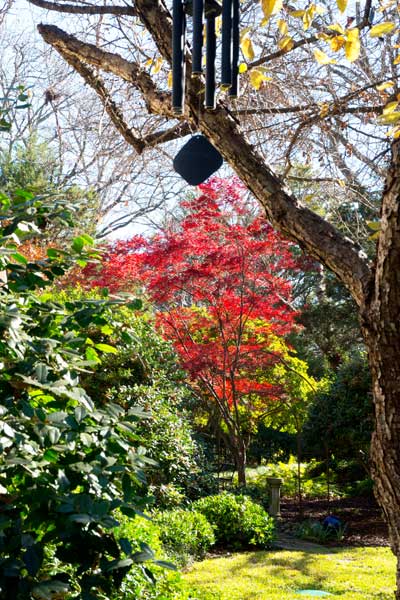
‘Bloodgood’ Japanese maple holds its fall color for several weeks.
As I get out of my truck at the nursery, I promise myself that this time I’ll find some variety other than ‘Bloodgood.’ But remembering how much Lynn loves them through the spring, summer and fall, I always succumb.
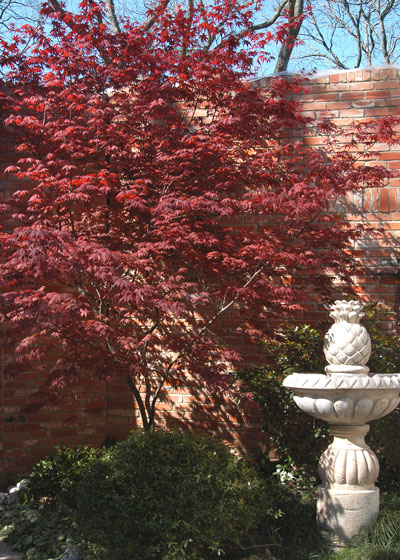
Japanese maple blends with brick color harmoniously.
The Basics…
I’ll make it more generic, covering only the important facts on this great group of small trees.
• There are several hundred varieties of Japanese maples. Some are green. Many are maroon-red. The better independent retail garden centers along and east of I-35 (the part of Texas where they’re best adapted) will offer a dozen or more types.

Backlighting sneaks through the brand new growth of a Japanese maple.
• Japanese maples must have shade. We have about 20, and there isn’t one that sticks out into the sun for more than a few minutes each day.
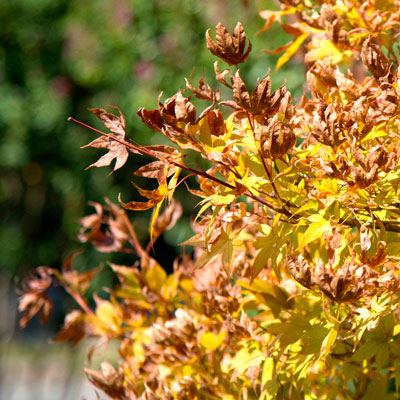
Leaves of a Japanese maple show hot-weather damage due to excessive sunlight, reflected heat.
• Japanese maples must be kept uniformly moist. These trees are from parts of Japan where temperatures rarely go above 80 to 85F. But we do go above those balmy readings here in Texas, so we counteract the temperatures by keeping our trees in the shade and by keeping them moist all the time. And we avoid high-nitrogen, lawn-type fertilizers during the heat of the summer for the same reason. Spring and fall feedings will be sufficient.
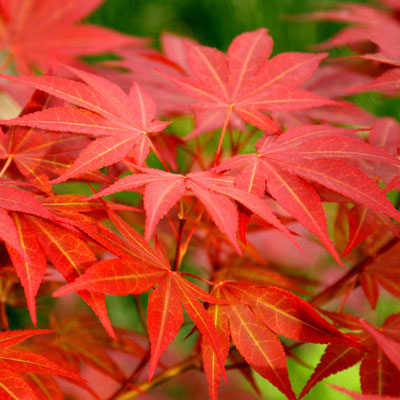
New foliage is brilliant in early spring.
• Japanese maples are winter-hardy clear to the Canadian border, and that means that they can be grown outdoors in patio pots 12 months a year.
